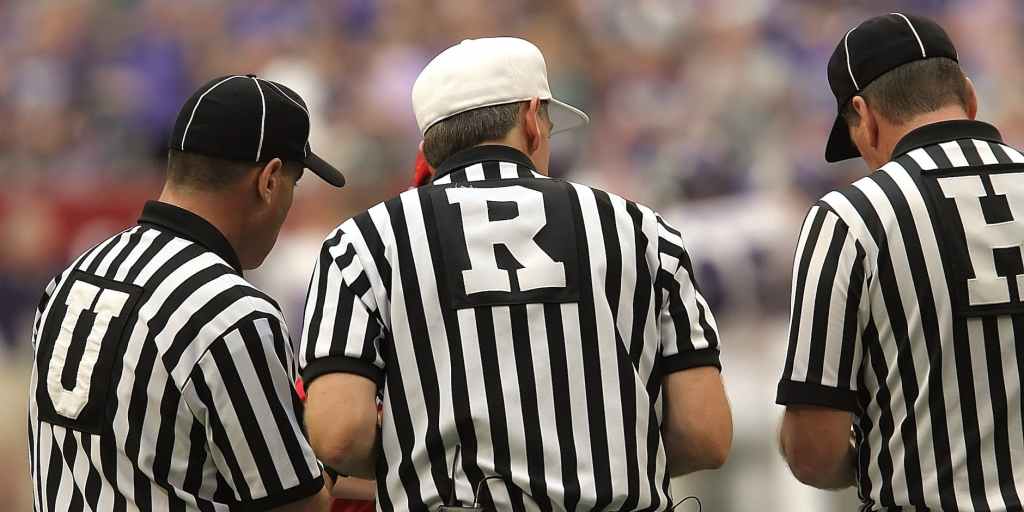Kellogg wasn’t with them because he was with another crew, filling in for an umpire that was injured.
Reilly, Cooper and Fletcher had breakfast together at the Hyatt Regency in nearby Scottsdale, Ariz. Normally Kellogg would join them, which makes this crew different from most.
“That’s unusual,” said Reilly, a 30-year veteran. “You don’t usually find four breakfast guys on the same crew. Now Fletch every now and then is a no-show, but generally, we eat together.”

After that, the four usually go through some form of a workout. Their dedication to doing so shows, as they are a very fit crew. On some days, it’s a matter of running, other days it’s more about weights.
Each have their own programs, but the goal is the same — to stay strong over the course of a 162-game season that is taxing physically.
“This is a real important time of year — a time when the players wear down and so do umpires,” Reilly said, “so you really have to make sure you take care of yourself right now.”
The crew, minus Kellogg and Fletcher, who has a friend in town, reconvened for a late lunch around 1:30 p.m., and afterward, they typically watch a little TV in their rooms or take a nap.
Their days are free, but you won’t find them out sightseeing. With a full night ahead of them, their focus is on getting ready for the game. Sometimes they’ll walk around a nearby mall, maybe take in a movie — nothing too strenuous.
Fletcher, the junior man on the crew with seven-plus big league seasons under his belt, is the one most likely to try and see a city’s landmark or tourist attraction if it’s convenient.
As his career goes on, it’s likely that he will do less and less.
“How many times can you see the Space Needle?” Reilly said.
Reilly used to play golf, but with the new airport security regulations put in place following the terrorist attacks of Sept. 11, carrying his clubs on the road is no longer practical.
Kellogg finally landed in Phoenix around 1:45 p.m. and waited for his luggage at baggage claim. Because they’re on the road for a month or more at a time, umpires can’t pack light. And with the weight restrictions, they generally each check two large bags, which means they spend a lot of time waiting, and lost luggage happens more than they care to think about.
By the time Kellogg arrived at the hotel, he had barely enough time to unpack and grab a quick nap before he had to meet the group in the lobby at 4:30 p.m. for the 30-minute ride to Chase Field.
Being punctual is not a sometimes thing for umpires, it’s a way of life. From the time they begin umpire school, being early, rather than on time, is stressed.
When they arrive at the umpires’ locker room at Chase Field, they change out of their street clothes and immediately begin to play cards. Reilly and Cooper are both huge Notre Dame fans, and they wear replica Fighting Irish jerseys before the game.
Whether it’s cards or some other form of relaxation, the group keeps things relatively loose for the first hour that they’re at the park. But with 30 minutes to go before game time, they turn their attention to the contest.
Just like the players, with every day being so routine, umpires have their own set of superstitions. Reilly, for instance, wore the same Notre Dame T-shirt under his umpire’s top every time he worked the plate for close to 30 years.
“He came in after a game and it was around his waist, because it had literally fallen apart,” Kellogg said.
Reilly has cut the shirt in pieces and places one in his pocket before each game.
The umpires also use the time before the game to treat various injuries. Fletcher will ice his surgically repaired knee, while Cooper gets the same treatment on his troublesome heel where he has plantar fasciitis.
Cooper is the plate umpire for the game, and that means his mind-set during the day is a little different than the other umpires. Reilly said that if he didn’t know which of his partners was scheduled to work the plate on a given day, he could still tell by how they act during the day. A lot of times they’re quieter, maybe do a little less intense of a workout.
“Some guys will tell you they don’t do anything different on the day that they have the plate, but that’s not true,” Reilly said. “I don’t care who you are or how long you’ve been doing it, you know the morning you wake up that you’ve got the plate. Actually, you know the night before when you go to sleep that you’ve got the plate next day.”
Kellogg is working third base, typically a less strenuous assignment, but no less important.
“Sometimes friends and family say you’ve got an off-day because you’re working third,” Cooper said. “But the one or two plays you’ll have at third are usually very important plays. Obviously, the plate guy has the most decisions to make, and you’ve got to bring your ‘A’ game when you’ve got the plate.”
Three hours and 40 minutes after taking the field, the crew returns to their locker room. It’s been a taxing day for Cooper, who has squatted behind the plate for 285 pitches. He had a confrontation with Arizona manager Bob Melvin that resulted in Melvin’s ejection in the seventh inning.
Postgame, the umpires will discuss any plays that happen that they feel they need to go over, take treatments when needed, grab a bite to eat, shower and head back to their hotel where the adrenaline from the game will keep them up for the next couple of hours before they finally head to bed.
After all, they’ve got to get up and do it all over again tomorrow.






